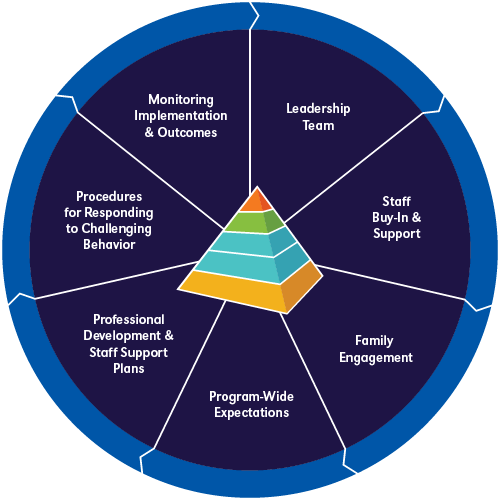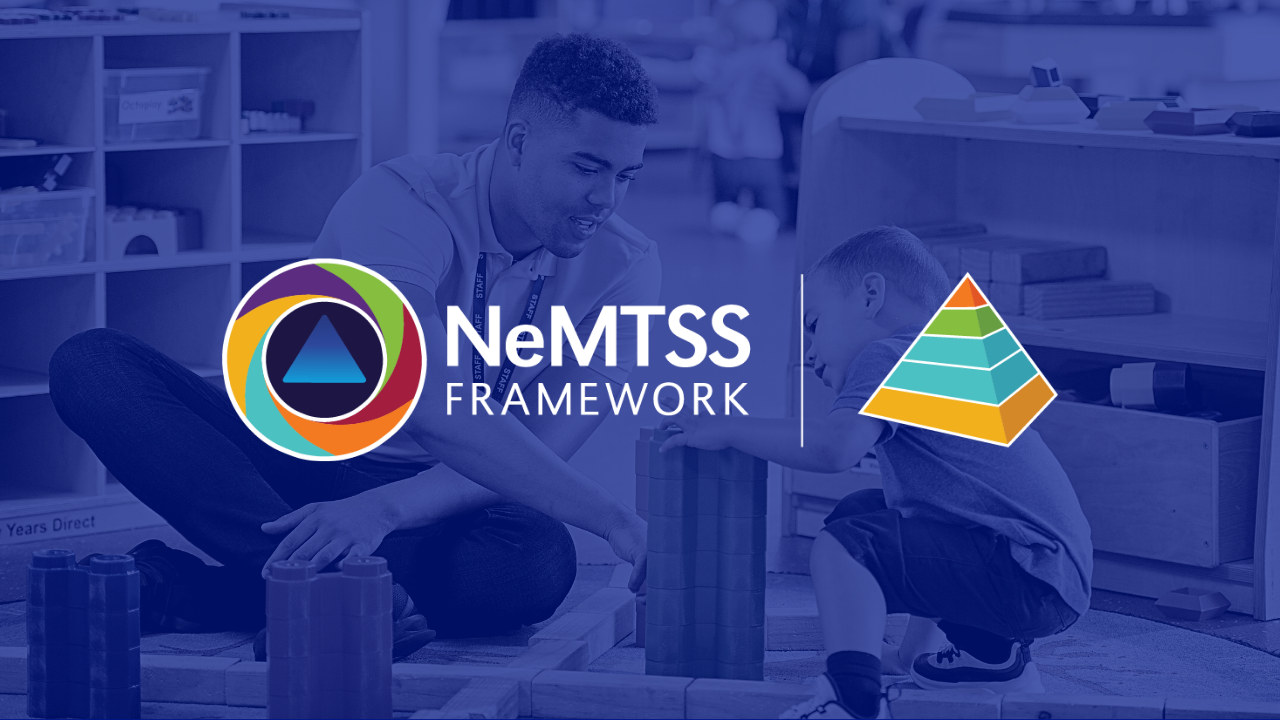The NeMTSS team has expanded support for early childhood programs and school districts throughout the state in the past year. The early childhood education team now includes five dedicated regional facilitators located throughout the state who partner with early childhood programs to support their growth within NeMTSS. They use the Pyramid Model as a multi-tiered system of support to help Nebraska educators serving children from birth to age 5.
What is the Pyramid Model?
The Pyramid Model is a positive behavioral intervention and support (PBIS) framework that uses systems-thinking and implementation science to promote evidence-based practices for healthy social and emotional development of young children.
- Systems-thinking is a way of looking at the big picture — a broader approach to planning and implementing a program. It helps districts and schools examine the individual components of the Pyramid Model and develop a customized program to achieve their goals.
- Implementation science means that Early Childhood MTSS Implementation Regional Facilitators support leadership teams in using a systematic approach in how they look at data, select goals and plan action steps to achieve their goals.

In future blog posts, we’ll go over each of the Pyramid Model’s Essential Components:
- Leadership team
- Staff buy-in and support
- Family engagement
- Program-wide expectations
- Professional development and staff support plans
- Procedures for responding to challenging behavior
- Monitoring implementation and outcomes
How does the Pyramid Model relate to NeMTSS?
The Pyramid Model is an important part of NeMTSS’s statewide plan to support all educators in Nebraska. “When the Pyramid Model is implemented program wide through the support of a program leadership team, it can be used effectively as an MTSS” (Fox et al., 2010; Hemmerter et al., 2013). The Pyramid Model is the framework selected by NeMTSS to support early childhood programs as a part of the program’s MTSS plan.
What does the Pyramid Model look like in Nebraska?
Early Childhood MTSS Implementation Regional Facilitators work with districts and programs throughout the state to guide their implementation of the Pyramid Model and discuss the seven Essential Components. In this process, programs may use data to determine which components of the system to develop.
When a program begins working with their Early Childhood MTSS Implementation Regional Facilitator, they can expect support via in-person and Zoom meetings, emails, and phone calls to create goals and action steps.
Prior to committing to Pyramid Model implementation, facilitators guide programs and districts through a readiness tool adapted specifically for Nebraska educators from the National Implementation Research Network (NIRN) Hexagon tool.
Participants can expect customized support and assistance from the NeMTSS Early Childhood Facilitators, including scheduling, reviewing data, creating program-wide expectations and discussing how to consider and select curricula.
Want to know more?
If your school or program is interested in finding out more about the Pyramid Model and NeMTSS early childhood support, please contact your regional facilitator! View our Team page for contact information.
The NeMTSS Early Childhood Implementation Regional Facilitators are knowledgeable educators in the field of early childhood education and want to help Nebraska educators feel supported and part of their schools’ MTSS while building their skills for supporting nurturing and responsive caregiving, creating engaging learning environments, providing targeted social-emotional skills and supporting children with challenging behaviors.


